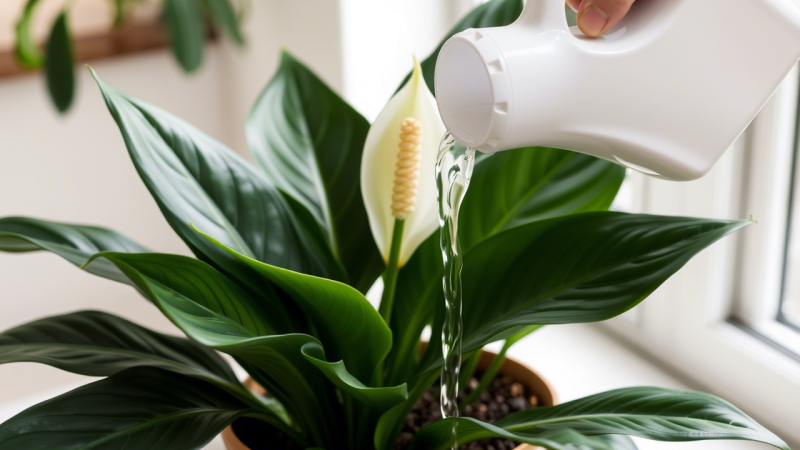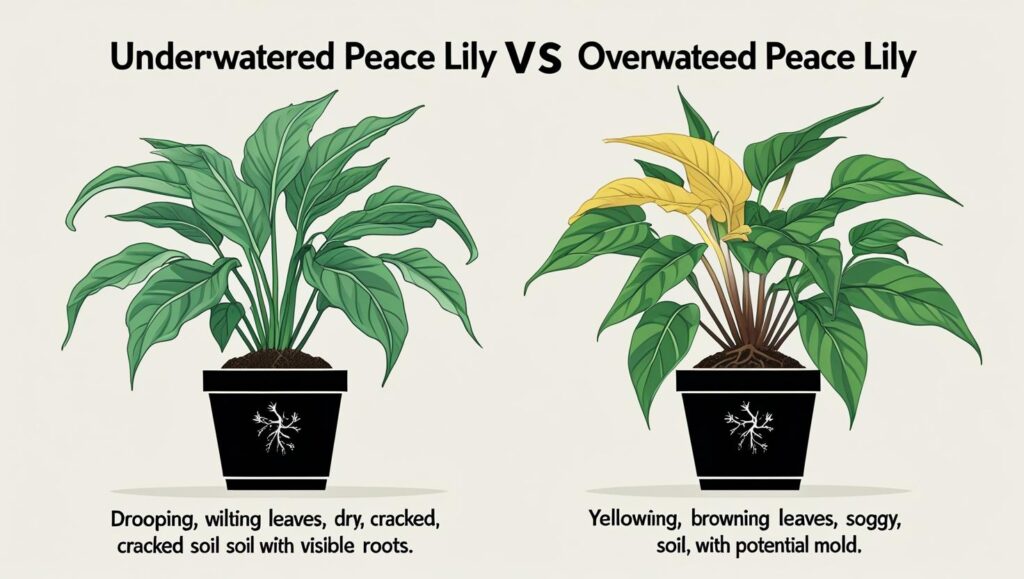For plant enthusiasts worldwide, from bustling city apartments to quiet suburban homes, the elegant peace lily (Spathiphyllum) is a popular choice for its lush, dark leaves and iconic white spathes. However, its dramatic drooping habit can cause confusion and anxiety for its caretakers. The central question remains a topic of frequent discussion: precisely how often should you water a peace lily? Horticultural experts overwhelmingly agree the answer is not found on a rigid schedule, but in the plant’s specific environment and needs.
The most reliable method, according to horticultural specialists, is to check the soil moisture regularly. Rather than watering once a week by default, owners should test the top inch of the soil. “If the soil feels dry up to your first knuckle, it’s time to water,” advises the North Carolina Extension Gardener Plant Toolbox. This simple, tactile approach prevents the two most common pitfalls of peace lily care: overwatering and underwatering.
Understanding the Signs: Thirst vs. Distress
A peace lily is highly expressive, providing clear visual cues about its water needs. Recognizing these signals is crucial for maintaining a healthy plant.
- Signs of Underwatering: The most dramatic and well-known sign is drooping leaves. When a peace lily is thirsty, its leaves will wilt noticeably. “This is a direct result of the plant cells losing turgor pressure due to dehydration,” explains a guide from Growhub, a plant care resource. Other signs include dry, crispy brown leaf tips and soil that feels dry to the touch and may pull away from the sides of the pot.
- Signs of Overwatering: Paradoxically, a key sign of overwatering is also wilting or drooping leaves, but with one critical difference: the soil will be soggy. This occurs because excess water can lead to root rot, a fungal disease that suffocates the roots, preventing them from absorbing water and nutrients. “Yellowing leaves, especially starting from the bottom of the plant, are one of the most common signs of overwatering,” notes the team at Backyard Boss, a home and garden publication. Other indicators include a musty or sour smell from the soil, mold on the soil surface, and soft, black, or mushy roots. Experts agree it is generally easier for a plant to recover from being too dry than from root rot.

Key Factors That Determine Watering Frequency
A plant’s need for water is not static. Several environmental and situational factors dictate how quickly its soil will dry out. Understanding these variables is essential for developing a proper watering routine.
- Light: Light exposure is a primary driver of water consumption. “Peace lilies that get more light will require more frequent watering than those that get less light,” states an article from The Spruce. A plant in a bright, indirectly lit location will photosynthesize more actively and use water more quickly than one in a low-light corner.
- Temperature and Humidity: As tropical natives, peace lilies thrive in warm and humid conditions, typically between 68°F and 85°F (20°C to 29°C). According to a guide from PictureThis, “Warmer temperatures will cause your plant’s soil to dry out more quickly and require water more often.” Conversely, higher humidity slows down transpiration, reducing water needs.
- Season: Watering needs change significantly with the seasons. The active growing period for a peace lily is in the spring and summer when increased light and warmer temperatures mean it requires more frequent watering. In the fall and winter, the plant enters a dormant phase, and its growth and water requirements slow considerably. “During this time, reduce watering to once every two weeks,” but continue to check soil moisture, advises Backyard Boss.
- Pot and Soil Type: The container and growing medium play a vital role in moisture retention. Porous materials like terra cotta allow moisture to evaporate through their walls, causing the soil to dry out faster. Non-porous pots, such as glazed ceramic or plastic, hold moisture for longer. Critically, the pot must have drainage holes. “Excess water should be able to flow freely,” advises the team at Epic Gardening, to prevent waterlogged soil and root rot. A well-draining, peat-based potting mix rich in organic matter is ideal.

Best Practices for Watering Your Peace Lily
When you’ve determined it’s time to water, the technique matters as much as the timing.
- Water Thoroughly: Water the plant until it flows freely from the drainage holes at the bottom of the pot. This ensures the entire root ball is saturated.
- Allow to Drain Completely: Never let the plant sit in a saucer of excess water. After watering, empty the saucer to prevent the roots from becoming waterlogged.
- Use Room-Temperature Water: “Peace lilies prefer lukewarm water over cold water, as the latter can shock the plant,” according to Lawn.com.au.
- Consider Water Quality: Peace lilies can be sensitive to chemicals commonly found in tap water, such as chlorine and fluoride, which can cause brown leaf tips. As noted by Siebenthaler’s, a garden center, “Allow your water to sit out overnight or use distilled water.” Filtered water or collected rainwater are also excellent alternatives.
Ultimately, caring for a peace lily involves observation and response rather than a rigid schedule. By paying attention to the plant and its environment, and by understanding the critical role of proper soil and drainage, anyone can help this popular houseplant thrive. As stated by experts at the University of Florida IFAS Extension, when properly cared for, these plants “can provide years of enjoyment.”
6 Essential Small-Space Plant Design Hacks to Maximize Your Greenery
